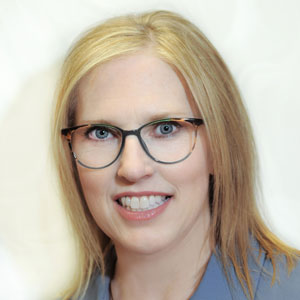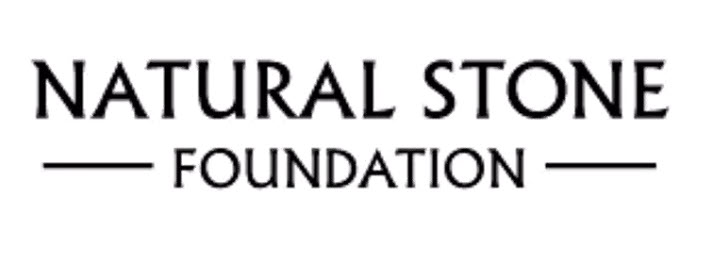Setting the Standards for Hard Surfaces
The Natural Stone Insitute and the International Surface Fabricators Association stand ready to spearhead international work on guidelines for quarried and manufactured materials.
OBERLIN, Ohio – One of the roles of the Natural Stone Institute is to provide technical resources for the industry. Within the next three-to-five years, the organization should add another heavy gun to its arsenal. Even better, that resource should do much to level the playing field for the industry around the world, while making it easier for end-users of the product and giving them confidence in what they’re buying. Last year, the International Standards Organization – ISO – launched an effort to create standards for natural stone and quartz surfaces. Although initially those efforts were going to be combined, ISO has subsequently agreed to create two separate committees, one for each material. Possibly the best news for the U.S. stone industry is that Chuck Muehlbauer, the Natural Stone Institute’s long-time technical director, will chair the worldwide effort for stone. It’s a credit to both the Natural Stone Institute and Muehlbauer that the U.S. is taking the lead in the process as it relates to stone. Jim Hieb, the organization’s CEO, says having standards for any product is vitally important and the institute already has one of the premier standards documents available in the Dimension Stone Design Manual or DSDM.
“There are some other quality publications out there, as well,” he says. “The Indiana Limestone Institute publishes a phenomenal handbook. The National Building Granite Quarriers Association has an outstanding specifications guide. But we go to other countries and there are some really good quality publications there, as well.” That’s part of the issue, Hieb adds. With more than 80% of the stone consumed in the United States coming from outside the country, it’s currently impossible to say that everyone uses same standards or went through the process of being vetted. By the time a final ISO standard is released, it will have had plenty of vetting. Hieb explains that the ISO is a membership organization with one primary standard-setting organization per country. For the United States, that’s the American National Standards Institute (ANSI). “We’ve signed an agreement with ANSI to help guide us through the process because they have a lot more experience than we do,” says Hieb. “We will build on their experience.” An important part of that is getting people from different segments of the industry to participate in both the U.S. committee and on the global oversight committee. Hieb said currently the Natural Stone Institute is soliciting its members to serve on both, and he hopes to have input from distributors, suppliers, fabricators, and installers.

"If they’re really active and frequently sell in the Western markets, they’re far more likely to familiarize themselves with it and comply with it."
Chuck Muehlbauer Natural Stone Institute
“They can petition to join a committee and there’s no cost to do that, although if a committee meets face-to-face, they might incur some travel expenses,” he says. “They’ll offer input and they’ll vet the proposed language of the standards.” Not surprisingly, the process will not be a speedy one. Muehlbauer says that three-to-five-year estimate on a timeframe is probably accurate. ISO’s average is about three years. Fortunately, not only does Muehlbauer know the material (pun intended), but he’s experienced with the process. He chaired the committee on stone for ASTM from 2012 to 2017. Formerly the American Society for Testing and Materials, it’s now known as ASTM International, and he says at that time there were about 120 individual members from approximately 20 countries. By comparison, ISO has 163 member countries. However, Muehlbauer agrees with Hieb’s contention that there is an interest in setting a world standard. “We can at least harmonize these so that when a European county is exporting to the United States or a Chinese company is exporting to the U.S., we have one body of consensus documents that everyone has access to and is already familiar with,” Muehlbauer says. Will all 163 countries accept the standard? Not necessarily, he admits, but there’s one major reason to do so.
“My experience is that some will, and some won’t,” he says. “It’s largely a matter of how much they export to the West. If they’re really active and frequently sell in the Western markets, they’re far more likely to familiarize themselves with it and comply with it.” And, while it will be a lot of work to write and vet these new standards, in the end, it should simplify life for just about everyone who works with natural stone as a material. Two past presidents of the Marble Institute of America (the Natural Stone Institute’s predecessor), believe it will level the playing field for those involved. “What you’re going to do is set these standards, and then there will be an expectation of the customer – whether it’s industrial, commercial, institutional or private – that if you’re conforming to ISO standards, then everything is evenly enforced and applied,” says Jim Hogan of Los-Angeles-based Carrara Marble Company of America, and 2008 MIA president. “When it comes down to the fabrication, it will define for us proper fabrication methods, adhesives and things like that,” states Tony Malisani of Great Falls, Mont.-based Malisani Inc., and 2014 MIA president. “It’s a simpler scope of things to follow to ensure good performance.” For those on the quartz surfaces side of the equation, the emphasis is likely to be more on defining the product – and then possibly setting fabrication standards. Paul “Max” Le Pera, a strategic business advisor to the building materials industry, who may head the U.S. committee working on the standards, believes the initial emphasis for that group needs to be defining quartz surfaces.

"For those who are calling out materials, it should help them budget more accurately and more appropriately."
Nancy Busch International Surface Fabricators Association
"“Very simply, quartz today is not what quartz was 15 years ago,” Le Pera says. “There are fillers and things like that: we don’t even know if the polishing standard are the same. That’s something the NSI doesn’t need to worry so much about because their raw materials don’t change.” Because of delays mostly caused by the pandemic, ANSI has not yet designated who will represent the U.S to the ISO, but Le Pera expects it may be the Ingomar, Pa.-based International Surface Fabricators Association (ISFA). An Italian organization similar to ANSI, the Ente Nazionale Italiano di Unificazione (known as UNI), will provide worldwide leadership for that segment. Both Hogan and Malisani see a huge advantage in splitting off the effort to set standards for quartz surfaces, even though many shops work with both it and natural stone. Hogan says this should also be a tremendous improvement for architects, designers, and specifiers. “It will allow them to go to one source and understand here are the testing standards, here are the physical property requirements, and with stone it doesn’t matter where you get your product because it isn’t manufactured,” Hogan says. “As long as everybody’s testing using the same test protocols, testing to the same standards, and reporting in the same fashion, it will go a long way for architects and designers to feel comfortable. “They can go to one source and get accurate information regardless of where the material comes from.”
If nothing else, Malisani sees it as helping to define just what natural stone is – and isn’t – including when it might require additional care, such as filling travertine or requiring a chip repair on some marbles. However, he says it will take time to see the end results. “I just hope people take the time to be involved,” he says. “There’s plenty of information out there. They need to educate themselves and get involved in it because this is probably the biggest thing in our lifetimes.” ISFA Executive Director Nancy Busch,says she believes a new worldwide standard will help those shops that are doing good work. “There should be an expectation of quality materials and workmanship at all levels of the project, whether it’s from the architect or the fabricator,” she says. “These standards will ensure a clear detail and communication of desired expectations. And, for those who are calling out materials, it should help them budget more accurately and more appropriately.” And, says the Natural Stone Institute’s Muehlbauer, it should make it easier to do so. “It’s so much easier for a spec writer to put in one line saying that methods of installation should comply with ISO standard such-and-such, rather than having to write 25 pages to include in a document,” Muehlbauer says. “And, they should have peace of mind that what they’re citing is legitimate and technically correct and appropriate.” “Ultimately, both sides are going to help both agendas," Busch says. "Let’s set the expectation for the finished product, whether that’s focused solely on material or material and fabrication.”
Fueling the Future

Anyone in business knows there’s no such thing as a free lunch, and that certainly holds true as the Natural Stone Institute begins working on a global standard for stone through the International Standards Organization. Jim Hieb, NSI CEO, estimates it will take approximately $200,000 annually to fund the effort, over the next two-to-three years. The plan is to raise the money through the organization’s newly launched philanthropic extension, the Natural Stone Foundation. The Natural Stone Foundation was launched last year in order to qualify for a program offered through Google that awards up to $10,000 per month in free Google ads. The ads aid the association’s ongoing promotional efforts through the www.usenaturalstone.org website, which educates users about natural stone. By underwriting industry projects, education and programs, the Natural Stone Foundation also becomes a vehicle enabling both companies and individuals to financially contribute financially. While he’s quick to refer to the standards as an “investment,” Hieb adds, “This is not a budgeted item, so we’re very much in need of the industry rallying together to support this cause.”
Having industry members donate to the foundation offers a couple advantages. First, it offers companies and individuals the tax benefits that come from writing a check to a charitable organization. “For instance, a company owner may decide to write a check from his or her personal account because they want to realize that tax benefit,” he says. It also offers the opportunity to give back to the industry to commemorate a professional or career milestone, honor a colleague or leave a legacy. “We see it as a win-win for everybody,” Hieb says. “It makes sense to utilize the foundation to raise funds to help further advance the setting of standards for the industry.”
People interested in making donations to the foundation should view the website at:
naturalstoneinstitute.org/foundation